The mulch in your yard protects plant roots, regulates soil temperature, conserves moisture, and suppresses weeds. However, mulch does not last forever. Over time, it breaks down, fades, and shifts, meaning it will need attention to keep working as intended. When this happens, homeowners are often faced with two options: replenishing their mulch or replacing it altogether.
Although these terms are sometimes used interchangeably, they describe two very different approaches to mulch care. Keep reading to find out if you should install new mulch or replenish existing mulch beds in your landscape.
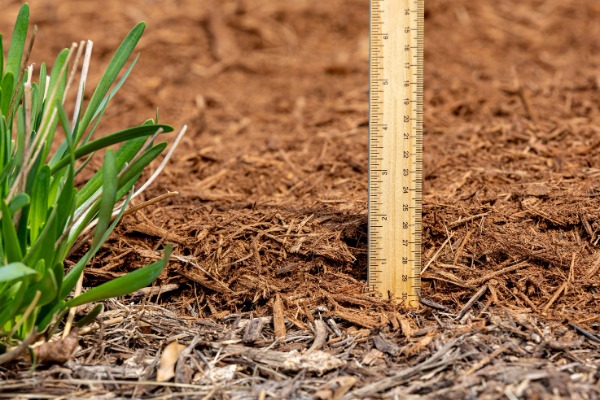
Replenishing mulch refers to adding a fresh layer on top of the existing mulch to restore its appearance and effectiveness. Because mulch naturally decomposes over time, it gradually thins out and loses color. Replenishment is a maintenance step that helps maintain the benefits of mulch without completely removing the old material.
Think of replenishing mulch as giving your landscape a “touch-up.” The old mulch is still serving a purpose, as it’s breaking down into organic matter that enriches the soil, so you simply top it off with a thin layer of new mulch to restore the protective barrier and refresh the look of your garden beds.
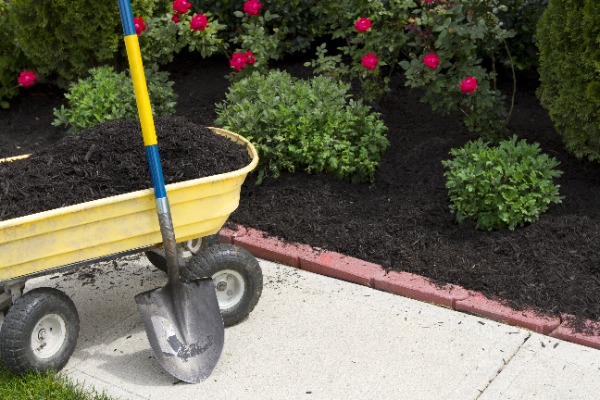
Replacing mulch is a more involved process. This means completely removing the old mulch before applying a brand-new layer. While replenishment maintains the mulch that’s already in place, replacement starts fresh.
Replacement is necessary when mulch has broken down too far, compacted into a dense layer, or developed issues such as mold, sour smells, or pest infestations. Old mulch that is left for too long without replacement can create a barrier that prevents water and nutrients from reaching the soil. It can even encourage disease or attract unwanted insects.
You prevent these problems from compounding and ensure your new mulch can perform as intended by replacing old mulch. While this is more labor-intensive than replenishing, it’s an essential part of long-term landscape health.
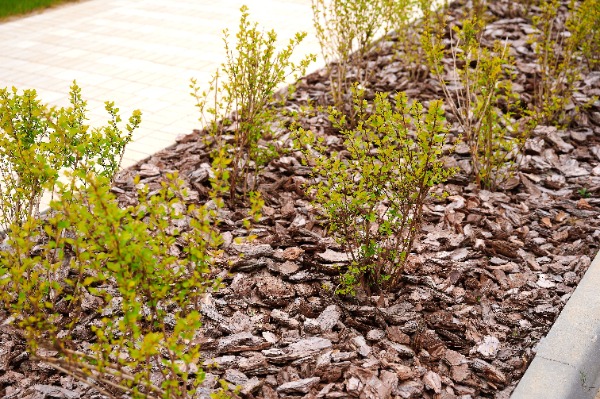
Determining whether you should replenish mulch usually comes down to appearance and depth. If your mulch looks thin or faded but is otherwise healthy, replenishment is the right choice. In these cases, adding a thin layer, about 1 inch, of fresh mulch will restore appearance and effectiveness without overburdening the soil.
Some common signs include:

Replacement becomes necessary when the existing mulch is no longer serving its purpose or is actively causing harm. Unlike replenishment, which addresses cosmetic and minor functional issues, replacement addresses deeper problems.
Look for these signs:

Replenishing mulch can generally be done at almost any time of year, but spring and early summer are often ideal. At this time, plants are entering their active growth season, and fresh mulch helps retain soil moisture during warmer weather while also preventing weeds from gaining a foothold. Replenishing mulch in spring also gives your landscape an instant facelift after the dullness of winter. Adding just one inch of mulch can dramatically restore the curb appeal of your flower beds and garden.
Fall is also a good time to replenish mulch, especially before the first frost. A refreshed layer insulates plant roots, helping perennials, shrubs, and trees withstand the coming winter temperatures.
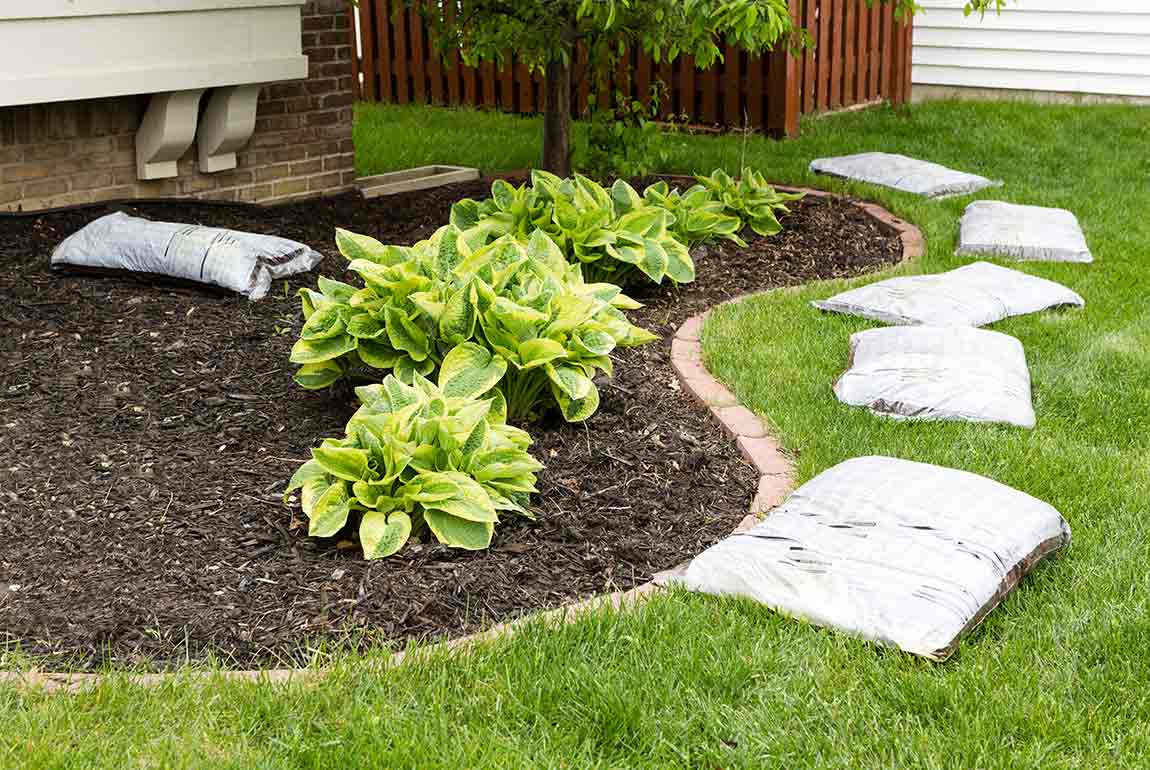
Replacing mulch is a larger task, so it’s often best to plan for it once every 1–3 years depending on your mulch type and how quickly it breaks down. Spring is the most common season for replacement, as this timing sets the stage for the entire growing season. By starting with a fresh base, you ensure your plants have optimal protection and your landscape looks neat from the start.
Fall can also be a smart time for mulch replacement, especially if you notice significant deterioration. Removing old mulch in autumn and applying new mulch ensures that your landscape beds are well-insulated before freezing weather sets in.

The frequency of replenishing or replacing mulch depends largely on the type of mulch you use. Organic mulches such as shredded bark, hardwood chips, or pine straw decompose more quickly, meaning they often require annual replenishment and full replacement every 1–3 years. Inorganic mulches such as rubber or stone require far less maintenance, but even these may need occasional refreshing for appearance.
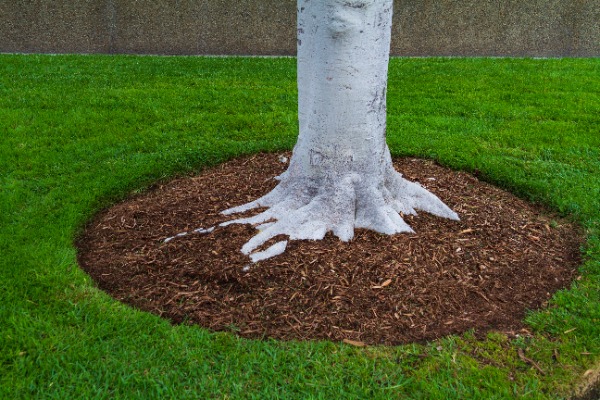
One of the biggest mistakes homeowners make is simply piling new mulch on top of old layers year after year without ever removing it. This leads to excessive buildup, which can suffocate plant roots, trap too much moisture, and create a breeding ground for disease and pests. By understanding when to replenish versus when to replace, you can avoid these issues.
Another mistake is ignoring mulch depth. Mulch that is too shallow doesn’t suppress weeds or retain moisture effectively, while mulch that is too deep creates root stress. Keeping mulch at 2–3 inches is the sweet spot for most plants.
Mulch plays a vital role in keeping your landscape healthy and attractive, but like anything else, it requires proper maintenance. Replenishing mulch is a lighter task that restores appearance and maintains protection, while replacing mulch is a deeper reset that becomes necessary when old mulch has broken down or become problematic.
If you need help maintaining your mulch beds or cleaning up your yard this fall or spring, call Summit Lawns in Lincoln today!